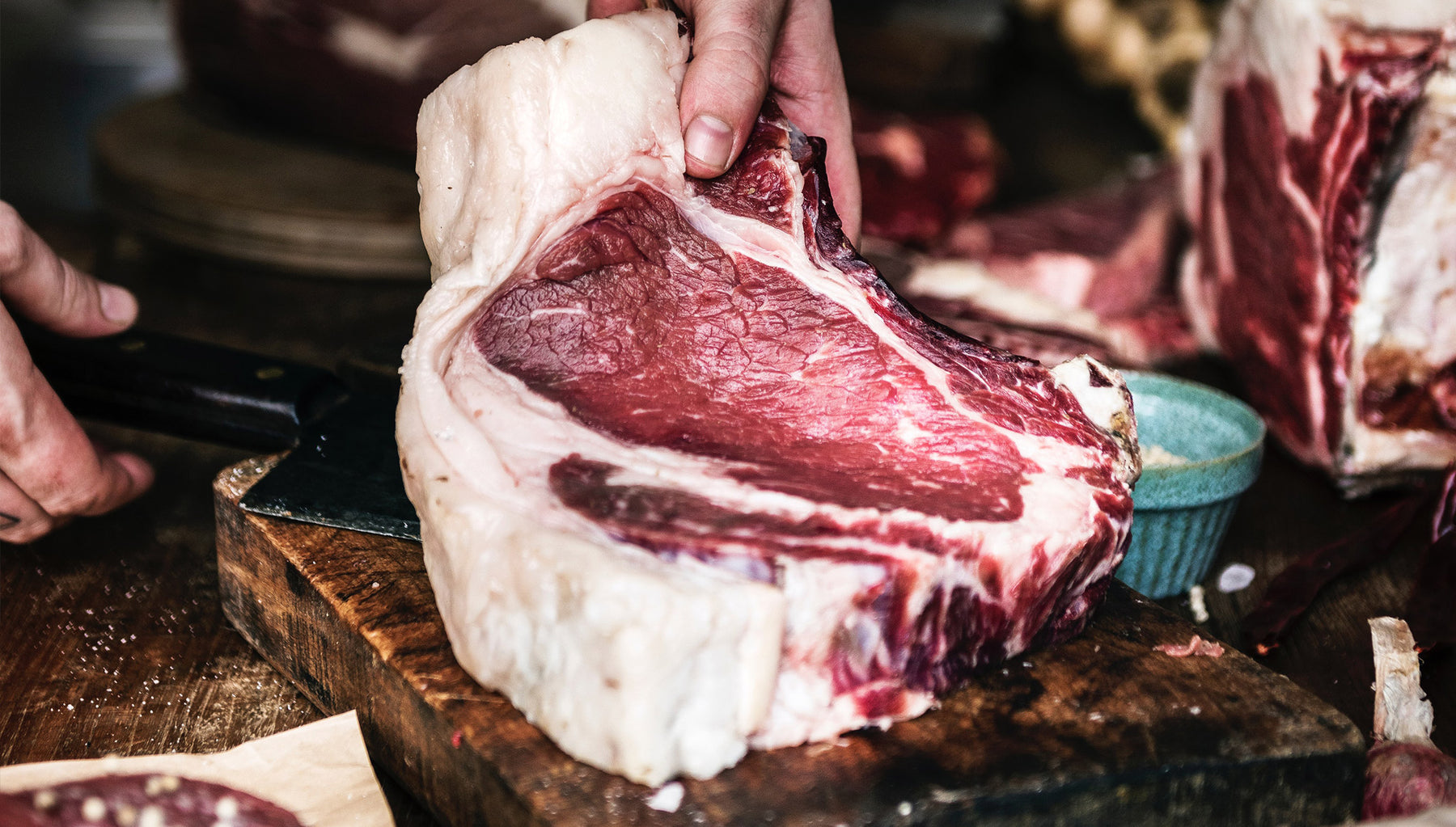
What is an Aged Meat?
You've probably heard about aged meat, whether it's dry aging or wet aging. When you read "aged meat", maybe you’re thinking about an old meat that stood too long in the fridge, but think again. In fact, it’s a controlled process that is also known as meat maturation.
Why aging meat?
Why is it important to make the meat age a little before eating it or even selling it? Simply because right after the slaughter, the animal’s meat is completely hard and therefore, almost inedible. We must then make it age a few days to make it good. Generally, the meat found at the grocery store has been aged between 7 and 12 days. In a butcher's shop, the meat you’ll find is sometimes aged between 14 and 28 days. The older it gets, the more tender and tastier it will be. Maillard's Selection 1913 steaks are aged for 60 days.
What happens during meat aging? While waiting a few days before the sale, the meat enzymes are destroying or gradually eliminating the fibers (connective muscle tissue), which relaxes the muscles and softens the meat. The longer it’s aged, the more the fibers disappear and gives optimal tenderness to the piece and gives incredible flavours, almost to a hazelnut taste, according to some.
Two ways to age meat
As mentioned above, aging meat is a process in an intensively controlled environment that involves maturing meat to make it better. Two methods are possible; dry-aging and wet-aging.
Dry-aging
Dry-aging consists of suspending meats in an environment just above the freezing point (between 1 ° C and 3 ° C) and in a humidity between 60% and 80%. This process allows the water to evaporate. Obviously, in a subzero environment, water freezes and doesn’t evaporate. In an environment that is too hot, meat just rots.
The dry maturation process causes weight loss, mainly due to the meat’s water evaporation and it contracts. What’s interesting in this case is that the flavours don’t evaporate and are concentrated in the remaining mass of meat.
Wet-aging
This maturation process is perhaps the most common since it requires less expensive or complex equipment. It could also be known as ‘’aging under vaccum’’ or sous-vide.
With this method, there is no water evaporation, and therefore, no weight loss. Tenderness will increase, but the flavour intensity will remain about the same. To get those inimitable flavours, you will need to have a dry-aged meat.
Maillard, online butcher
To conclude, aged meat only has advantages. It will have more tenderness and a lot more flavour.
Be sure to check out Maillard's Selection 1913 beef products, a selection of dry-aged meat. You will find them in our beef products: www.maillard.co/beef


